Ambassador to Austria and UK Permanent Representative to the United Nations and other International Organisations in Vienna
Part of UK in Austria
11th February 2020 Vienna, Austria
How the British residence in Vienna was rescued: 1945-1950 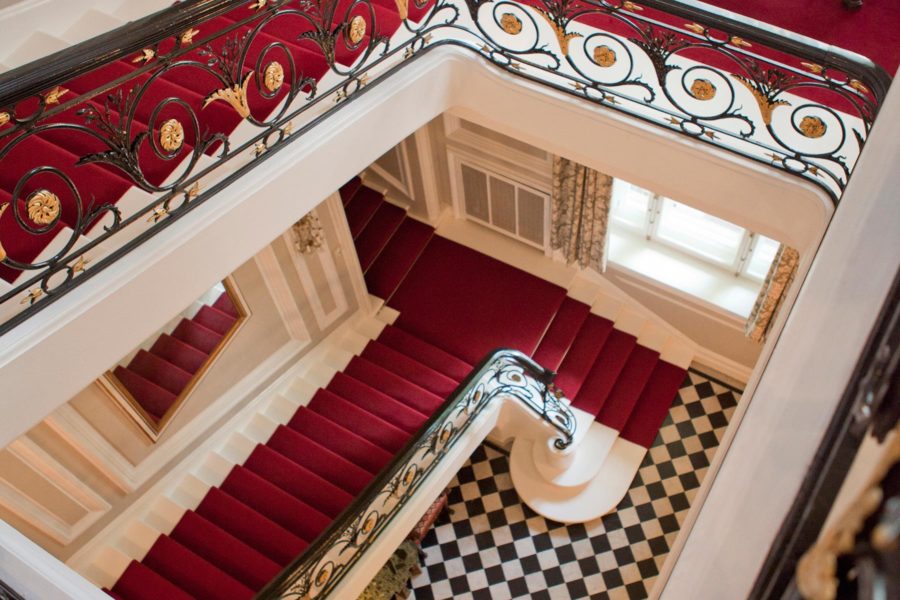
“It is open to doubt whether this location in Vienna is really suitable for the Minister’s residence… it can in no way be considered a pleasant district in which to live.”
How times change!
Historic papers we recently unearthed about the restoration of the British ambassador’s residence at Metternichgasse 6 in Vienna after 1945 contain fascinating nuggets.
The residence was built in 1873 for the British government by the Austrian architect Viktor Rumpelmayer. After the Anschluss in 1938, it was sold to the National Socialist Flying Corps, and in 1945 became the property of the Austrian government. The excellent “Room for Diplomacy”, by my former Foreign office colleague Mark Bertram, sets out its history. This pre-war picture of the front door (with splendid major domo) shows a royal coat of arms over the door which no longer exists. If anyone has any details of what happened to the coat of arms, or any other old photos of the residence from the period 1938-50, I would be interested to hear from them.
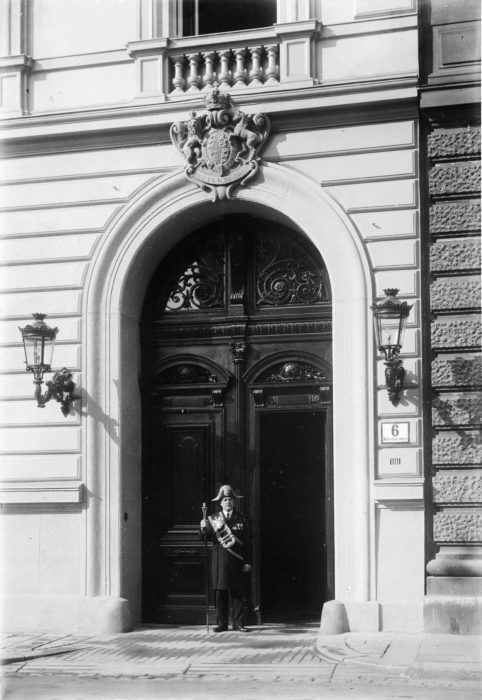
The post-war history of the residence begins with a war-time letter from a Mr Mack, of the Allied Control Commission, to Mr Crombie of the Foreign Office, dated 23 February 1945. Mack, later to become the first post-war ambassador to Austria, writes that “it would be desirable for a decision to be taken regarding the future of the former British Embassy/Legation premises in Vienna, Metternichgasse 6”. Crombie replies on 27 February that “there is everything to be said in favour of re-occupying the former British Embassy premises if they should still be habitable when the Commission reaches Vienna”. He encloses an excerpt of a minute from the splendidly-named Frank Ashton-Gwatkin, presumably also of the FO, who comments: “There is a good deal to be said for the old British Embassy. It is a bit old-fashioned but it has a dignified air, good reception rooms and a tradition.”
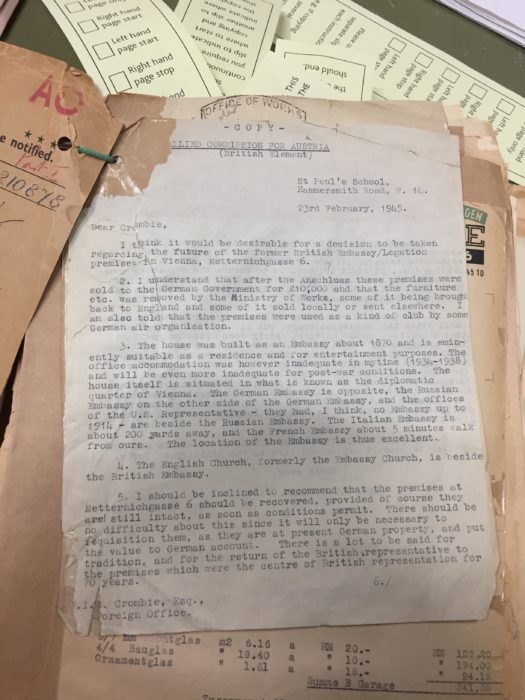
The trail of papers goes cold until 26 October 1948, when a Mr E C Inston of the Allied Commission for Austria writes to a Mr Parr in the Ministry of Works. He records that on that day he had “had a look at the old Embassy… The building sustained a direct hit on the stable block, and there was also damage to the roof. None of the windows possesses any glazing and the building is much the worse for weather, externally and internally.” A later assessment, dated 1949, notes that “the premises have been severely bomb-damaged. Two bombs have almost completely destroyed the old servants’ wing. The remainder of the building is very much battered and the lack of windows, and even window frames, has enabled the weather, including snow and rain, to penetrate the building since 1944. All the sanitary fittings, fireplaces, and most of the radiator heating installation and other equipment are missing. Most the doors and some frames are also missing. Much panelling and flooring is smashed… the roof is not watertight… Complete rehabilitation of the whole building would probably cost as much as a complete rebuild… It is open to doubt whether this location in Vienna is really suitable for the Minister’s residence… it can in no way be considered a pleasant district in which to live.”
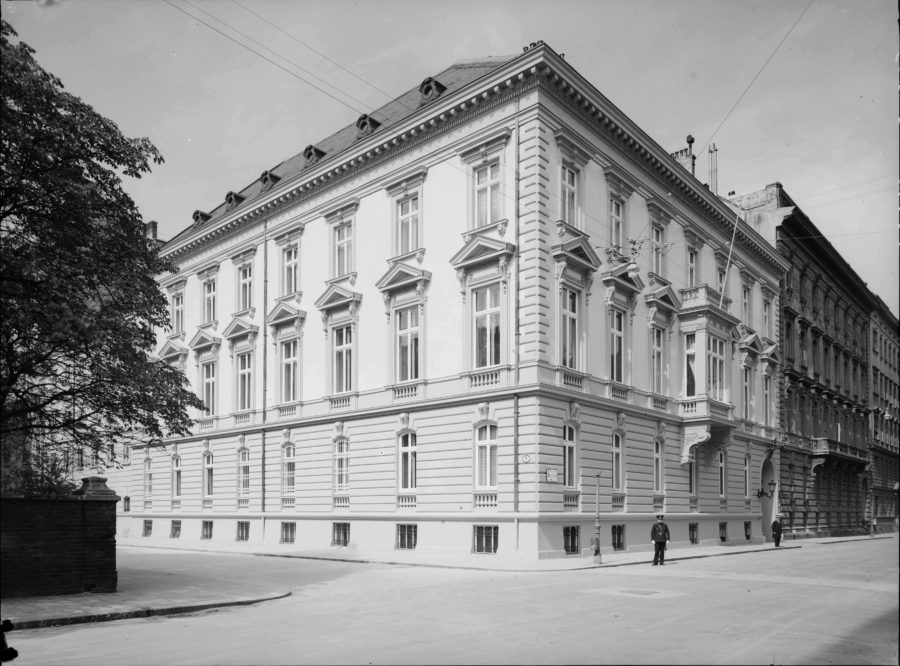
This picture shows the residence in its pre-war condition.
Slowly, views evolved. A letter from G R Codrington of the Foreign Office Conference and Supply Department dated 10 October 1949 records a meeting with Harold Caccia (later Sir Harold Caccia and ultimately Lord Caccia), posted to Vienna as ambassador in November that year. Codrington says “it is decided that the location for the Residence shall be in the present location. This is the diplomatic quarter, and after discussion here, from the political view it has been decided that we should stay there and not try and solve the problem by acquiring a residence out at Hietzing or in some residential suburb.”
Codrington continues: “Consequential on this policy decision, it seems to follow that as a long-term proposition the obvious thing is to pull down our old Embassy house and to rebuild on that site.” A note dated the following day notes that: “As to a permanent residence Mr Caccia is satisfied that we cannot do better than buy back the old Legation, demolish it and erect a new residence on the site. The fabric was shattered by bombing and its planning is completely out of date.” A note by Mr Inston to the British Legation (then located in at 40 Reisnerstrasse, a couple of hundred metres from the Metternichgasse), dated 6 December, also argues in favour of acquiring “the old Embassy building” but adds that “it would be necessary to pull down the existing building which has been badly bomb damaged, and is in fact in worse condition than when I last inspected it, at least one floor having recently collapsed owing to rot.”
In fact although the exchanges of 1949 ruled out locating the British residence to the outskirts, Caccia himself seems, between 1949 and 1950, to have begun to favour, instead of the Metternichgasse, the former Lanckoronski Palace site at 18 Jacquingasse (now the site of the Hotel Daniel on the Gürtel). This led in July 1950 to a visit by a Ministry of Works architect, the Warsaw-trained Zwi Sirotkin. Sirotkin wrote a report dated 28 July 1950 in which he compared the two sites.
Sirotkin wrote of Vienna that “the general scene – political, economic, etc – is confused, owing to the fact that Austria is at present occupied by four powers, each with a different approach to questions of administration and general matters of policy… Vienna, in comparison with other big cities of German speaking Europe, has escaped lightly from the destruction of the war, but on the other hand, owing to the political set-up in Austria, it is confronted with what may appear insuperable difficulties.” Looking at Vienna today, I think we can agree that those difficulties have been overcome.
Sirotkin thought the Lanckoronski Palace, which was little more than a burned-out shell, unsuitable (“architecturally, aesthetically and structurally this building has little to recommend it”). The fact that Count Lanckoronski, who was living in Switzerland, cancelled a proposed meeting in Linz to discuss a possible sale, and demanded payment in Swiss francs, may not have helped. Sirotkin concluded, with admirable clarity: “Having weighed up the pros and cons of both schemes, I have no hesitation in recommending the immediate re-purchase of No.6 Metternichgasse.” He also recommended the purchase of the adjoining properties in the Salesianergasse on which the current British Embassy was constructed in 1989 – this will be in the subject of a future post. Following correspondence in August 1950 co-ordinated by one Eric de Normann, KBE, CB, Sirotkin’s recommendations were accepted by the FCO and by Caccia, mainly on the grounds of costs and timing.
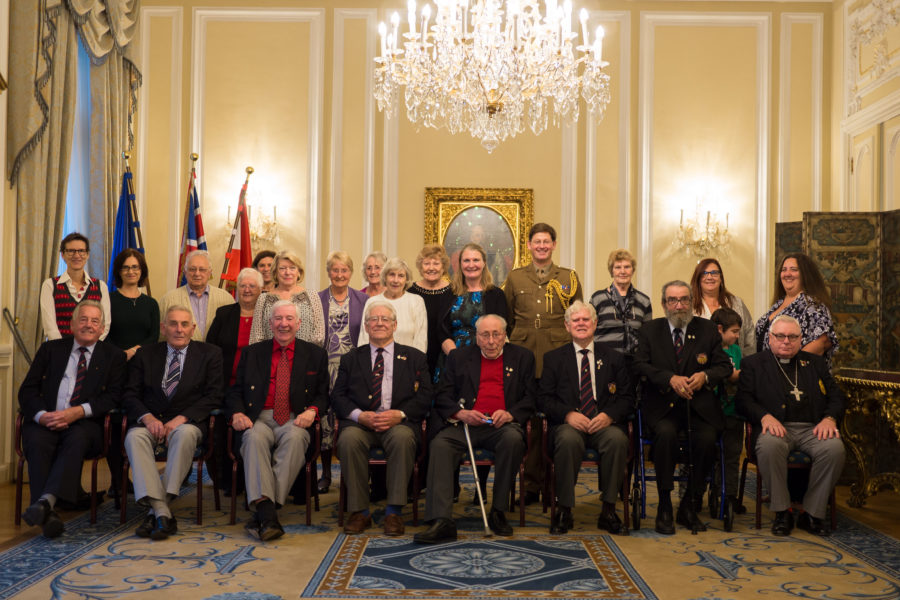
Members of 105 Provost Company Royal Military Police, who had served in Vienna from 1945-55, at the Residence in 2015
By 28 October 1950, we see a note from A J S Pullan of the Foreign Office to one J D Fraser in the Ministry of Works recording “Sir Harold Caccia’s telephone approval of the sketch plans for the reinstatement of the Vienna Residence at No.6 Metternichgasse.” The note sets out additional comments by Lady Caccia, who has arrived in post, including that: “the main staircase has a good wrought iron balustrade typical of the country and of good design, but this is broken on the upper floor. I understand that there has been a suggestion that this balustrade should be scrapped and replaced by wood panelling. This would be a great mistake; wrought iron work is a feature of Austrian craftsmanship, and there are able craftsmen who can do exactly what is wanted in Vienna itself, in Salzburg and elsewhere… Lady Caccia tells us that there is a work-shop just close to the residence where they make and repair chandeliers for all the old palaces. It will no doubt be cheaper to have the chandeliers which are being provided repaired in Vienna rather than in London.”
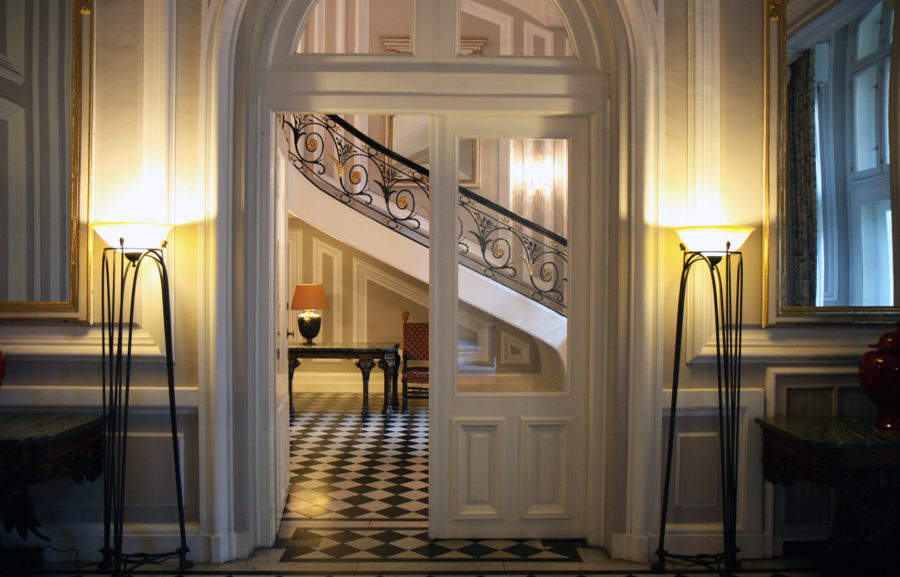
Anyone who has visited the residence in the Metternichgasse in modern times, or has witnessed much British architecture of the 1950s, will be grateful that the 1873 building was preserved. The chandeliers and the wrought-iron balustrade are still there, as is the “work-shop just close” – J&L Lobmeyr, in the Salesianergasse. Despite its age, far from being “completely out of date”, the layout is brilliant for all manner of functions, from business seminars to policy workshops, conferences large and small, dinners, breakfasts, tete-a-tetes and receptions. There is also a back staircase, allowing ambassadors discreetly to depart receptions without making a scene. Mack, Crombie, Ashton-Gwatkin, Inston, Codrington, Sirotkin, Sir and Lady Caccia, Pullan, Fraser, Eric de Normann and others may sound quaint and historic; but they did a splendid job.
Metternichgasse 6 is now widely considered “a pleasant place to live” – as the presence nearby of not only the British, but also the Russian, German, Chinese, Iranian, Norwegian and several other embassies bears witness.
If you are interested in this post, please see our earlier piece on the history of the Jaurèsgasse, on which the British Embassy in Vienna is situated. A post on the history of our 1989 embassy offices, and how they came to be there, will follow later.
P.S. We have not been able to locate any pictures of the Metternichgasse site between the years of 1938 and 1950, or of the subsequent rebuilding. If you know of any such images, we would be delighted to see them.
P.P.S. The building in which Messrs Winter and Fraser of the Ministry of Works were based in 1948 was Lambeth Bridge House, SE1 – the first building I entered on my first day as a civil servant in the Department of the Environment on 3 October 1979. The building in which the British Legation was based in 1948 was Reisnerstrasse 40 – subsequently the British Embassy until 1989, where I worked as Second Secretary (Chancery) from 1984-87.









